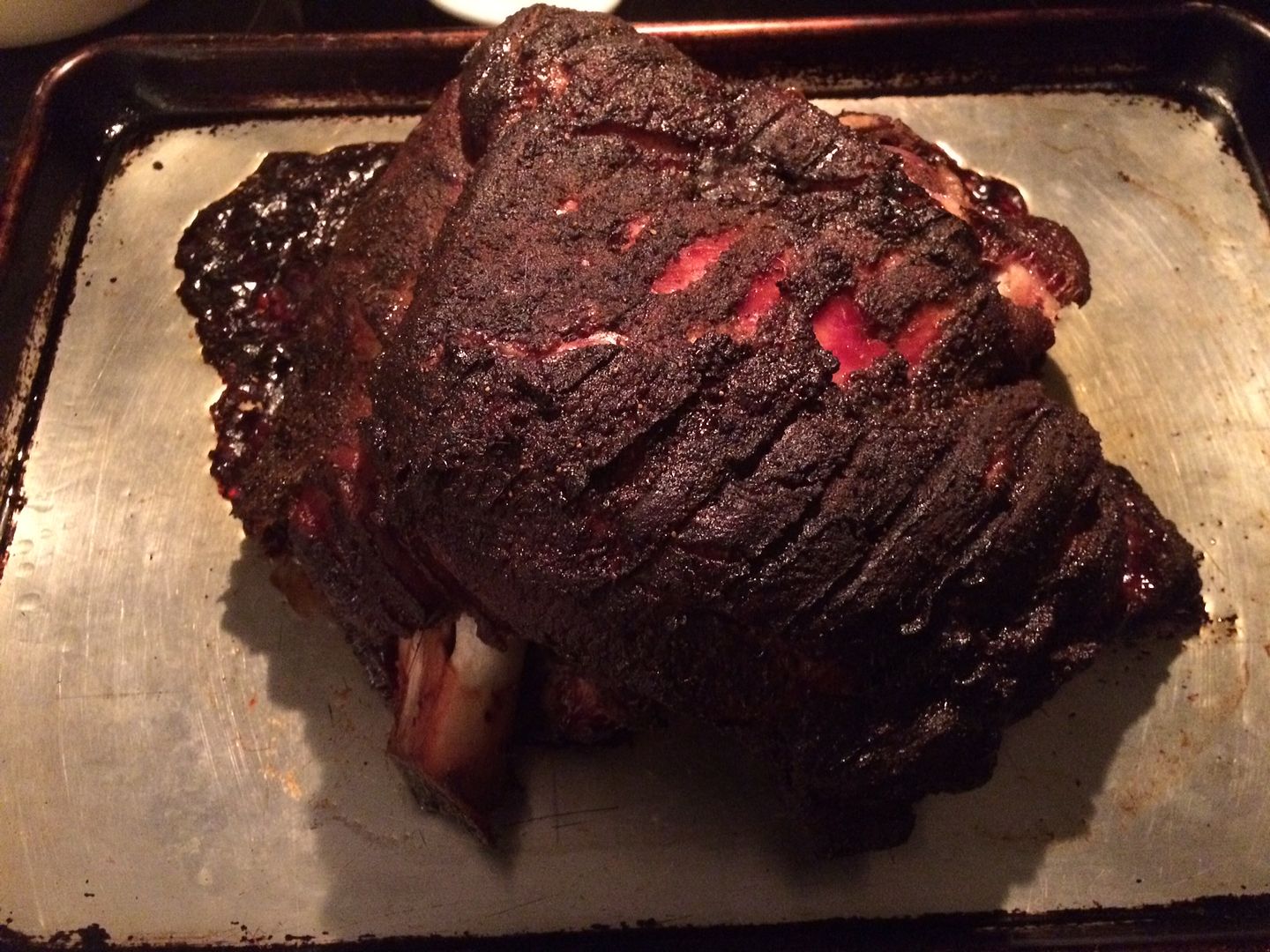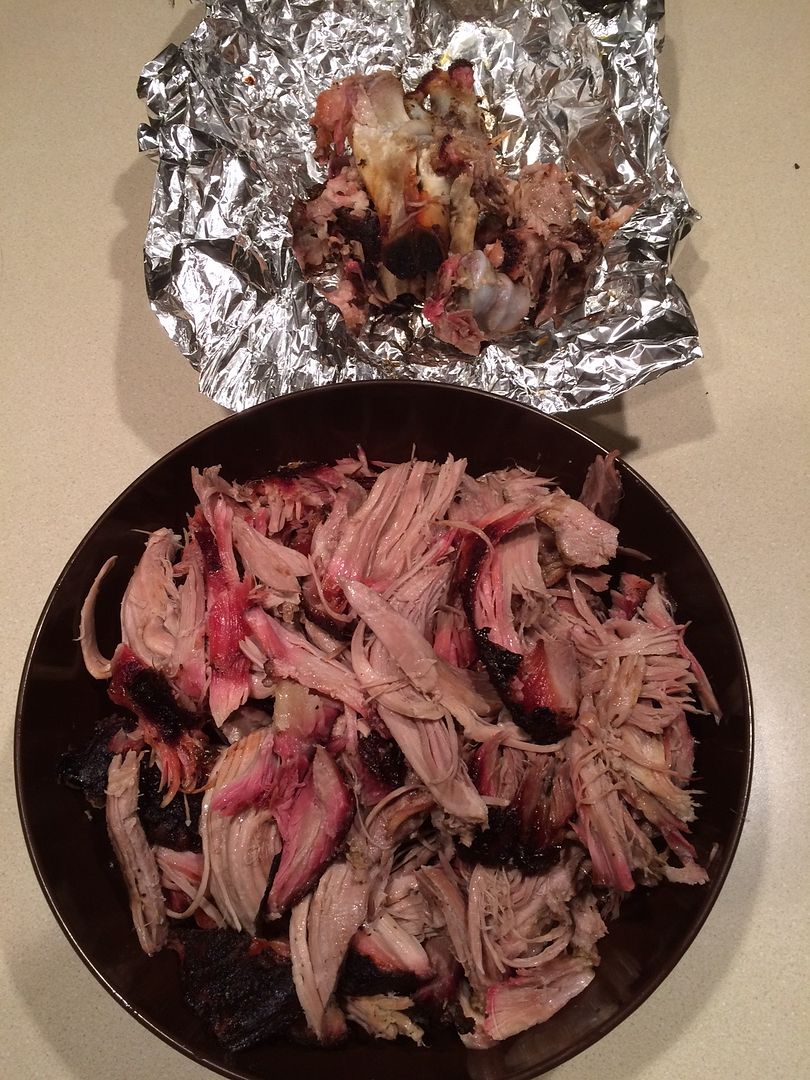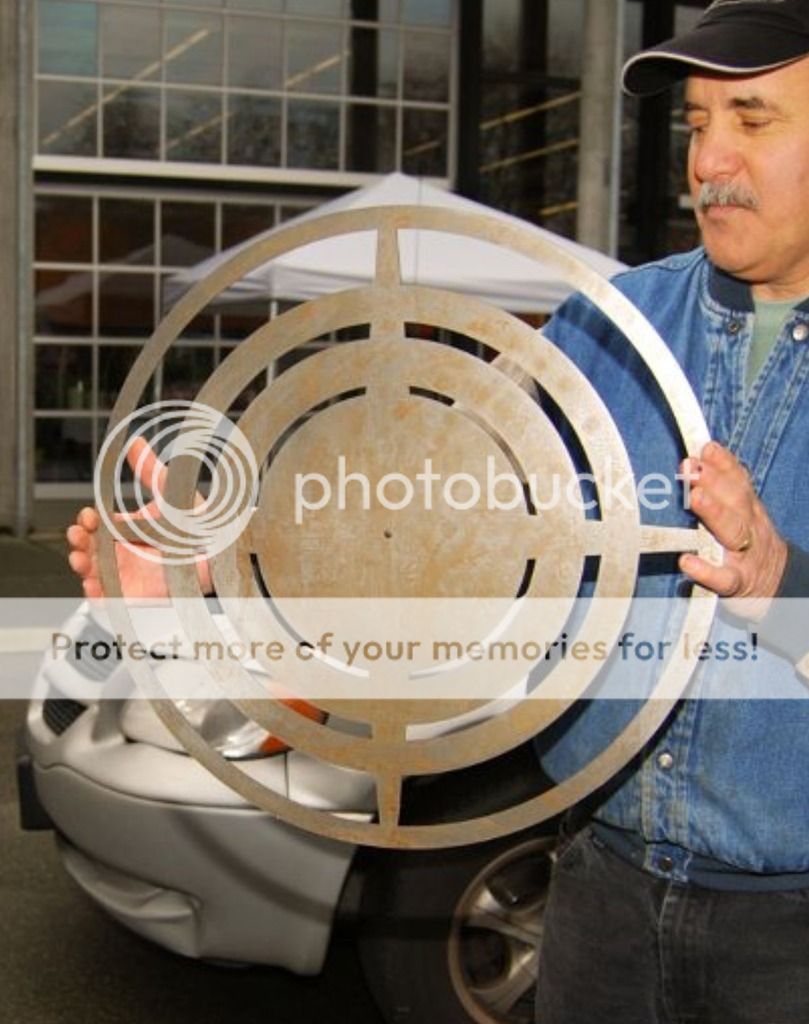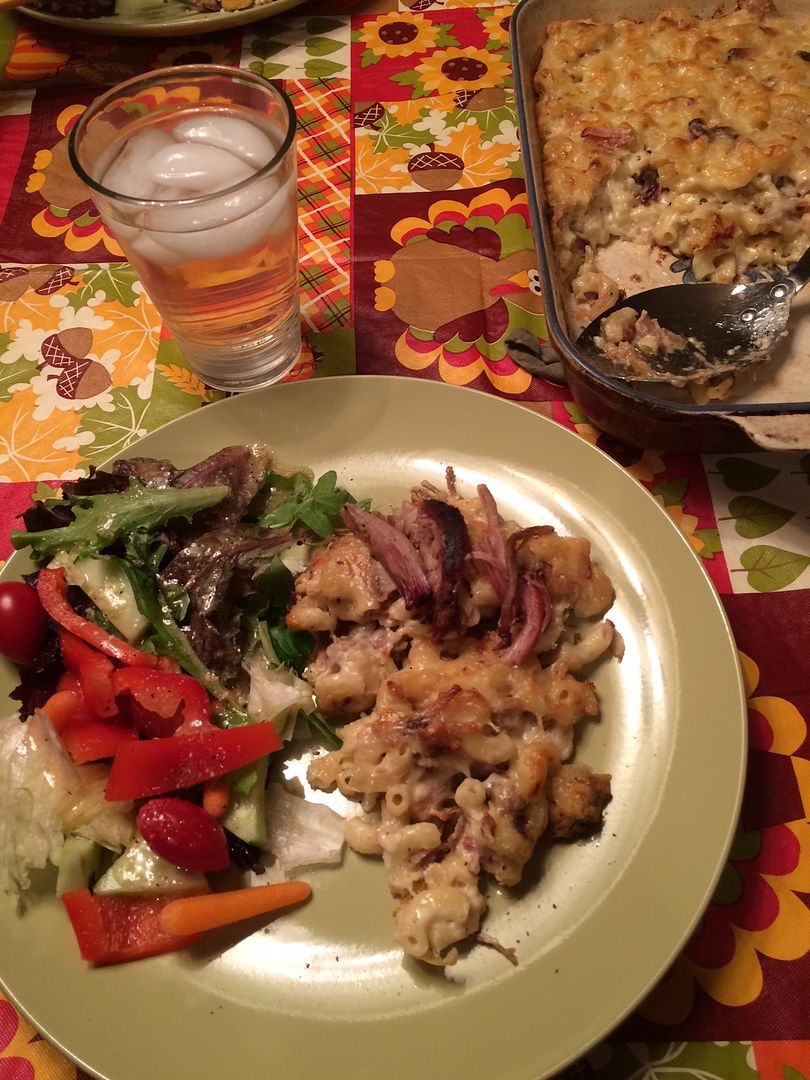gixxerjasen
Well-known member
Nice, I've been trying to figure out how to put brackets in for a deflector. Never thought about just setting it there. Sometimes the simple stuff eludes me.
















OMG!!!So... what do you do with those many pounds of pulled pork from your last big cook? Why make some Mac 'n Cheese of course:
Smokey Mac 'n Cheese (to die for)
- 1 (8 ounce) package macaroni
- 4 tablespoons butter
- 4 tablespoons flour
- 1 cup milk
- 1 cup cream
- 1⁄2 teaspoon salt
- fresh ground black pepper, to taste
- 1 cup of shredded, good quality cheddar cheese, (we like Cabot's "Seriously Sharp Cheddar")
- 1 cup of shredded Monterey Jack (we used Cabots)
- 1⁄2 cup coarsely minced pulled pork in the bake
- 1/2 cup pulled pork for topping after the bake
- Preheat oven to 400°F.
- Cook and drain macaroni according to package directions; set aside.
- In a large saucepan melt butter.
- Add flour mixed with salt and pepper, using a whisk to stir until well blended.
- Pour milk and cream in gradually; stirring constantly.
- Bring to boiling point and boil 2 minutes (stirring constantly).
- Reduce heat and cook (stirring constantly) 10 minutes.
- Add shredded cheeses little by little and simmer an additional 5 minutes, or until cheese melts.
- Turn off flame.
- Add macaroni to the saucepan and toss to coat with the cheese sauce.
- Add minced pork and stir in
- Transfer macaroni to a buttered baking dish.
- Bake 20 minutes until the top is golden brown.
- Top with remaining pulled pork and bake another 5 minutes to warm it up, or warm up in foil pouch and serve on the side.

+1I have a similar Brinkman offset grill. It's a great idea but no amount of fiddle/fussing with the design has produced good results. Impossible to get good sealing, heat uniformity in the cooking chamber is not good and the resulting fuel consumption is essentially out of control. It would be a good challenge for a clever, creative feller like you. Not Recommended.
Enter your email address to join: